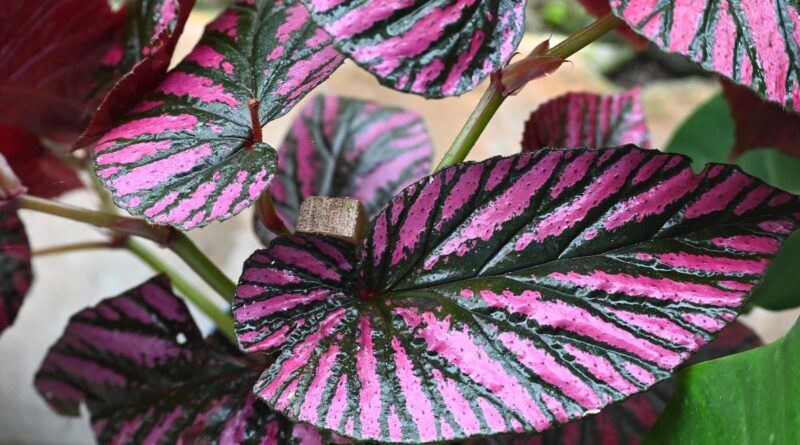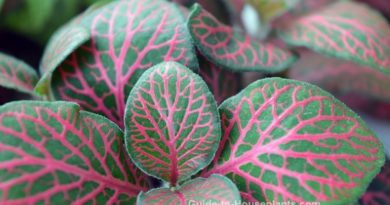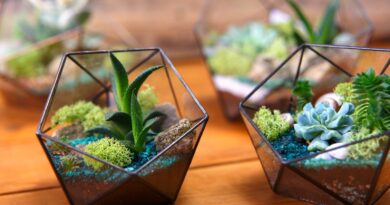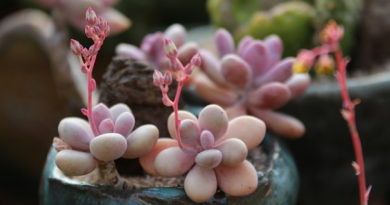21 Neon Houseplants for a Bright Indoor Garden
Neon is back, and in a big way. This color trend seems to come around in waves every few years and is having its moment again. This time, gardeners have jumped on board, embracing bright hues and opting for plants with a neon glow in their leaves or flowers.
For houseplant growers, there are so many options that tick the neon box. Highlighter-colored foliage and bright flowers are everywhere, providing plenty of choice for every kind of indoor gardener.
Anthurium
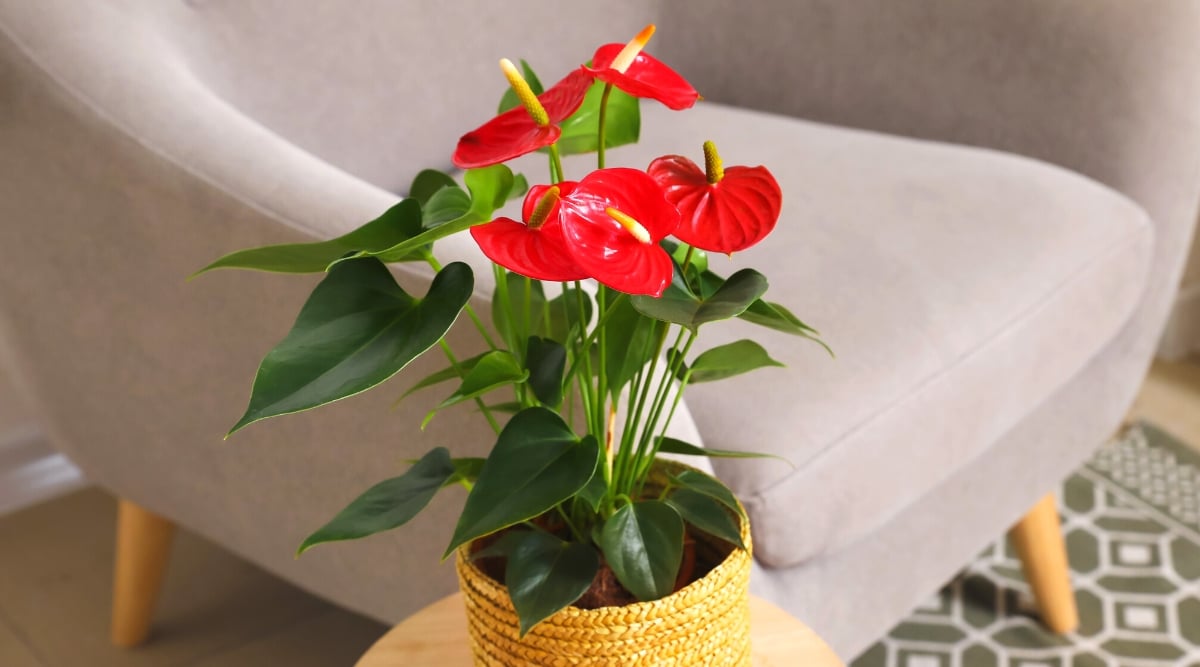
Anthuriums are houseplant staples that have retained their popularity for decades. While it could be because of their ease of care or stunning foliage, I think we can all agree the flowers are the real standout.
Anthuriums have long spadix flowers similar in shape to other members of the Arum family. These are surrounded by a colorful shield – a waxy, modified leaf – that adds a pop of color to any space. The flowers appear almost year-round in the right conditions, keeping your indoor plant collection bright.
The traditional red or blush pink are the most popular anthurium options, but they certainly aren’t the only ones. There are several colors that fit the neon descriptor, from electric pink to bright purple. It may take some shopping around to find the color of your choice, but it will be well worth the effort.
Croton
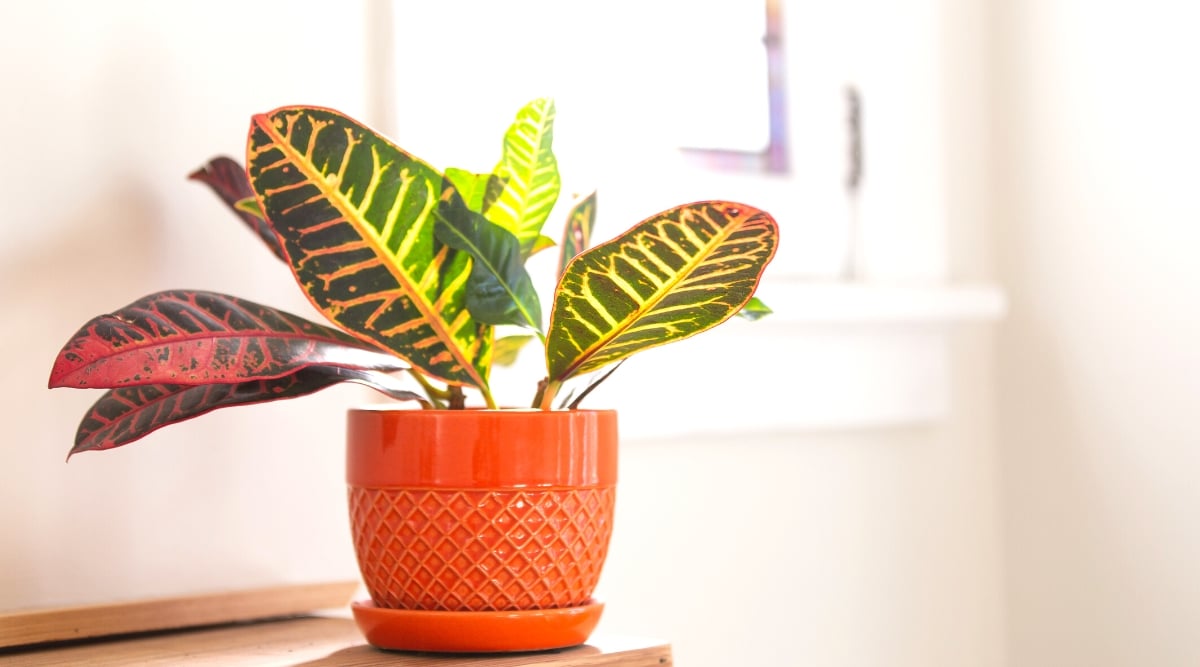
This is the first plant I recommend to anyone looking to fill their home with color. These leafy plants are impossible to miss, with vivid leaves in a range of warm colors.
You won’t just get one neon hue. You’ll get several. Red, orange, yellow, and lime green are spread across the leaves of the most common veined varieties, but other species have different patterns and colors to suit any interior.
This impressive color does come with a downside. Crotons are not the most beginner-friendly houseplants. They are known for dropping their leaves and are generally fussy about care. It’s best to keep their environments consistent and don’t move them once you find the perfect spot to avoid mishaps.
Kalanchoe
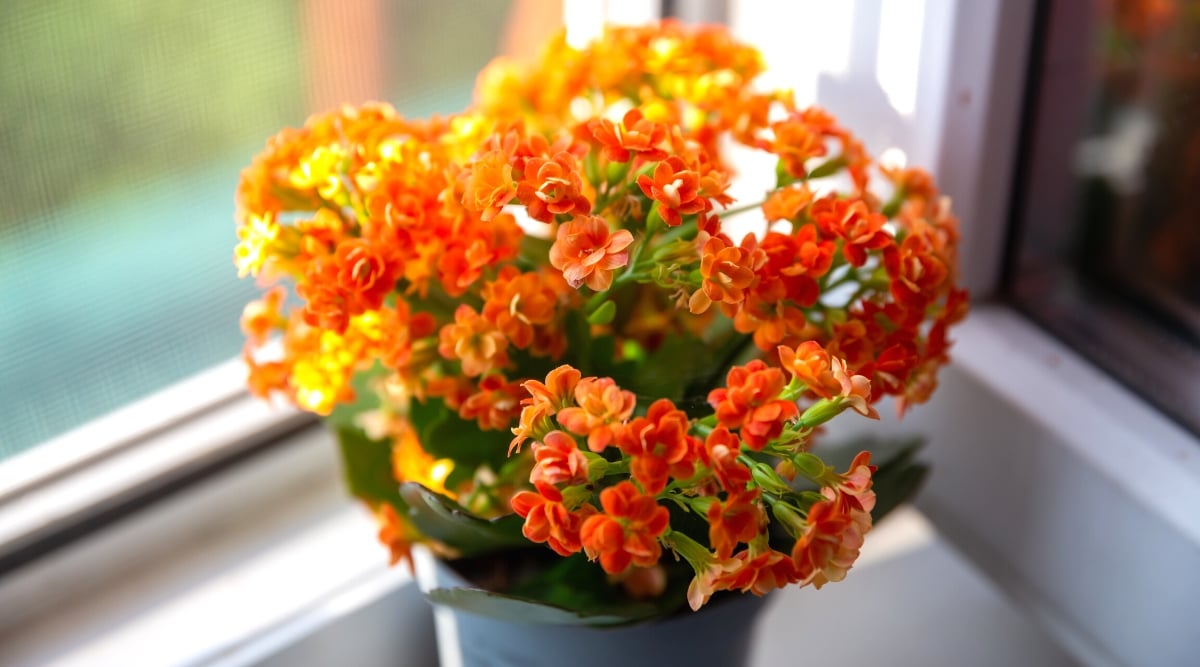
Kalanchoe is one of a few succulent genera that doesn’t mind growing indoors. In fact, they are happiest and produce the most flowers in bright, indirect light, adding vivid blooms to indoor spaces.
There are many species of kalanchoe to choose from. However, if neon color is what you’re after, the popular Kalanchoe blossfeldiana will deliver. Warm reds, oranges, yellows, and pinks are bound to stand out wherever they are placed. Controlling the amount of light they receive can encourage more and more flowers throughout the warmer months.
Since these plants are succulents, it’s essential to avoid overwatering. They store water in their leaves and are incredibly sensitive to rot if the soil does not drain well. Wait until the soil has almost completely dried out before watering again to keep your plant happy and blooming.
Polka Dot Plant

Hypoestes phyllostachya is an adorable houseplant with mottled leaves perfectly described by its common name. It’s often overlooked in favor of houseplants with larger leaves. However, it certainly checks all the boxes for neon color and is bound to become one of the favorites of your collection.
Polka dot plants are typically a combination of green and pink, but there are also white or reddish varieties available. The brightest option is the neon pink, with mottled spots on a green background.
For the best possible color, place your polka dot plant in bright, indirect light for most of the day. They are ideal for shelves or home offices and make great tropical feature plants in closed terrariums.
Nerve Plant
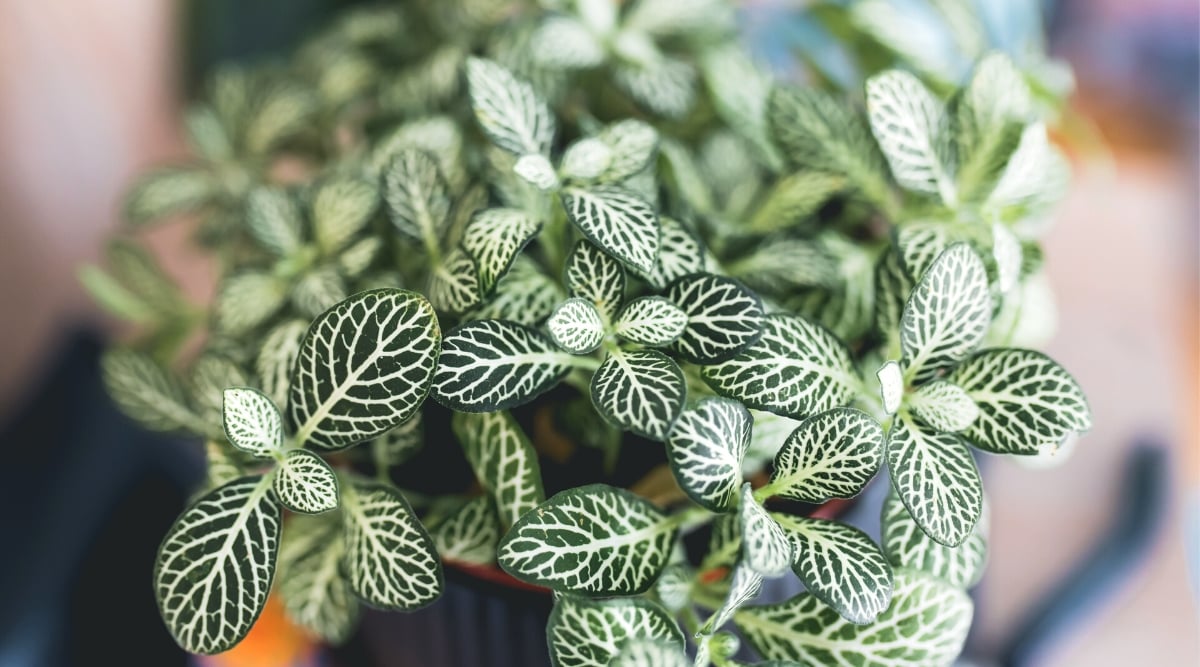
The nerve plant (Fittonia) is often paired with polka dot plants for a few reasons. They have similar growing requirements and the same relatively compact shape. But what connects them most is similarity in color, just with a difference in pattern.
Nerve plants display their splashes of color along the veins of the leaves rather than in large spots. This gives the foliage an intricate look, similar to a nervous system (hence the common name). The contrasting colors only heighten the glowing neon look of the leaves, especially in the pink varieties.
Growing to a maximum height of about six inches, you won’t need to worry about nerve plants overwhelming your space. They are ideal for decorating surfaces or, like polka dot plants, popping into a terrarium.
Caladium
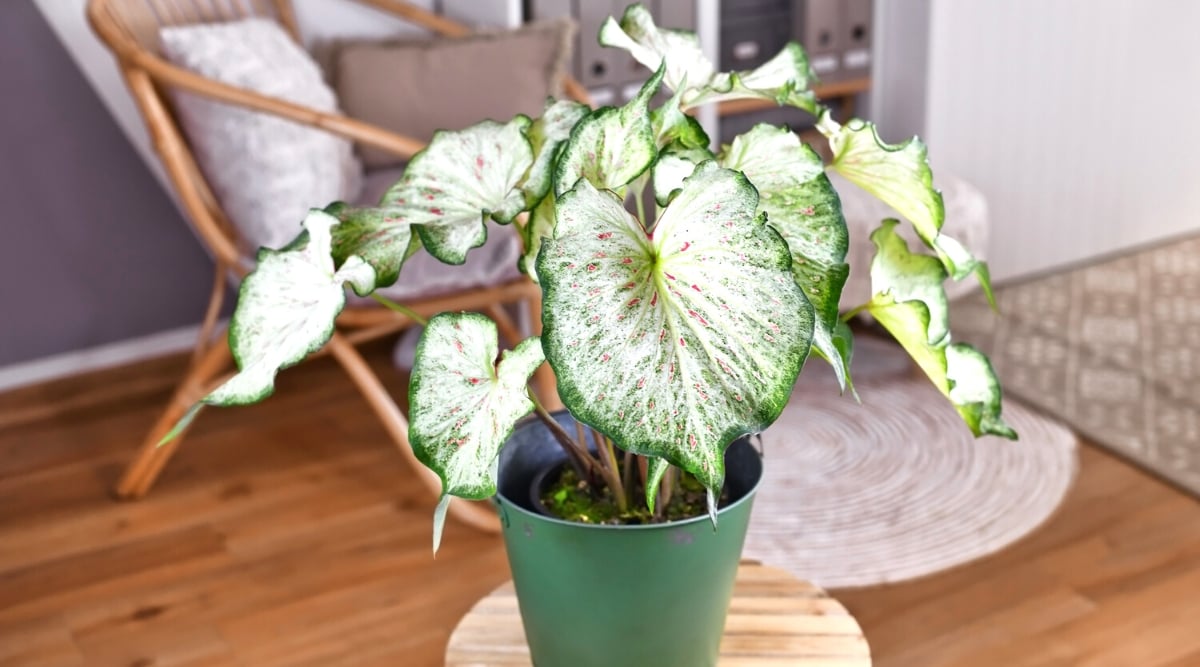
Considering the focus on color in recent years, it’s surprising that caladiums haven’t become everybody’s go-to houseplant. They have risen in popularity, though, and sport intricate patterns you can’t help but stare at.
When looking for neon, there is no shortage of choice in this group, which contains over 1,000 cultivars. You’ll find combinations of pink, white, red, and green that fit well into a neon or sci-fi garden aesthetic. Different varieties have slightly different patterns, from striped to mottled, so make sure you take a look around to find your favorites.
Caladiums are often kept as shade plants outdoors. However, they are not tolerant of cold and need to be protected over the warmer months, ideal for growing in containers indoors.
Chinese Evergreen
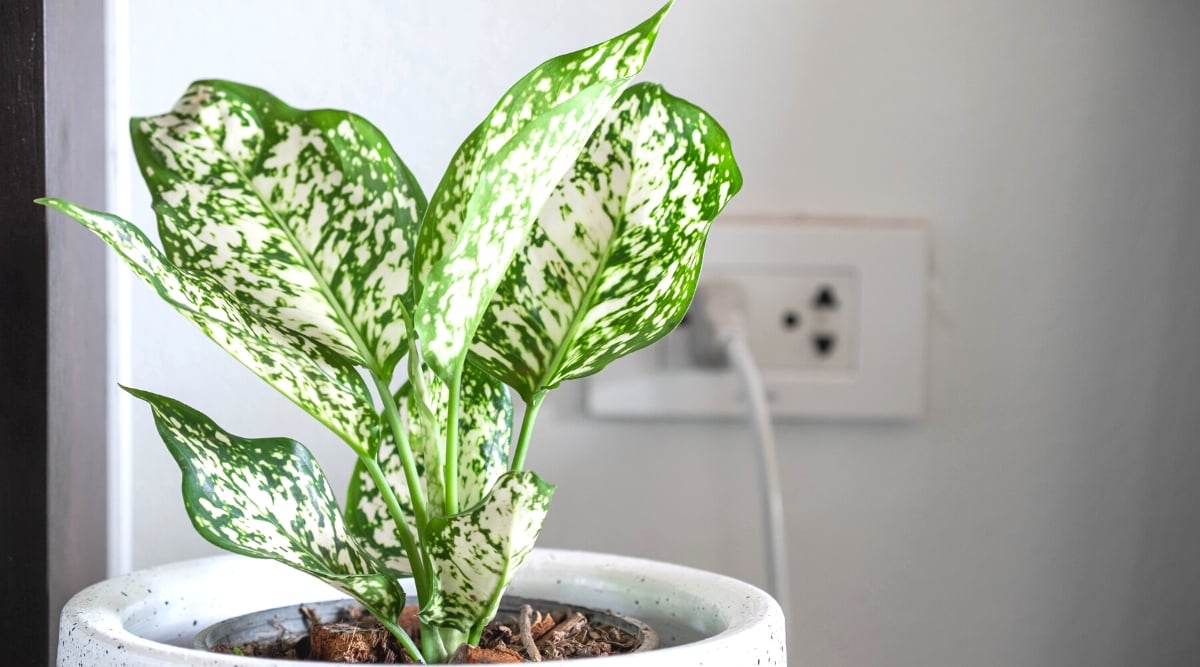
For beginners who want a splash of neon color without any fuss or extra maintenance, Aglaonema is the answer. These plants are incredibly tough and adapt well to a wide range of environments, tolerating mistakes from plant newbies with ease.
Like caladiums, Chinese evergreens are not for the indecisive. There is a long list of stunning cultivars, with several sporting eye-catching neon color. Pink is common, but you can also find reddish and orange varieties with unique and intricate patterns.
Chinese evergreens are beloved for their ability to grow in low-light areas. But if you want their color to truly shine, brighter spots are best. Avoid any contact with direct sun, as this can burn the foliage and leave unsightly scorch marks that take away from their color.
Dumb Cane
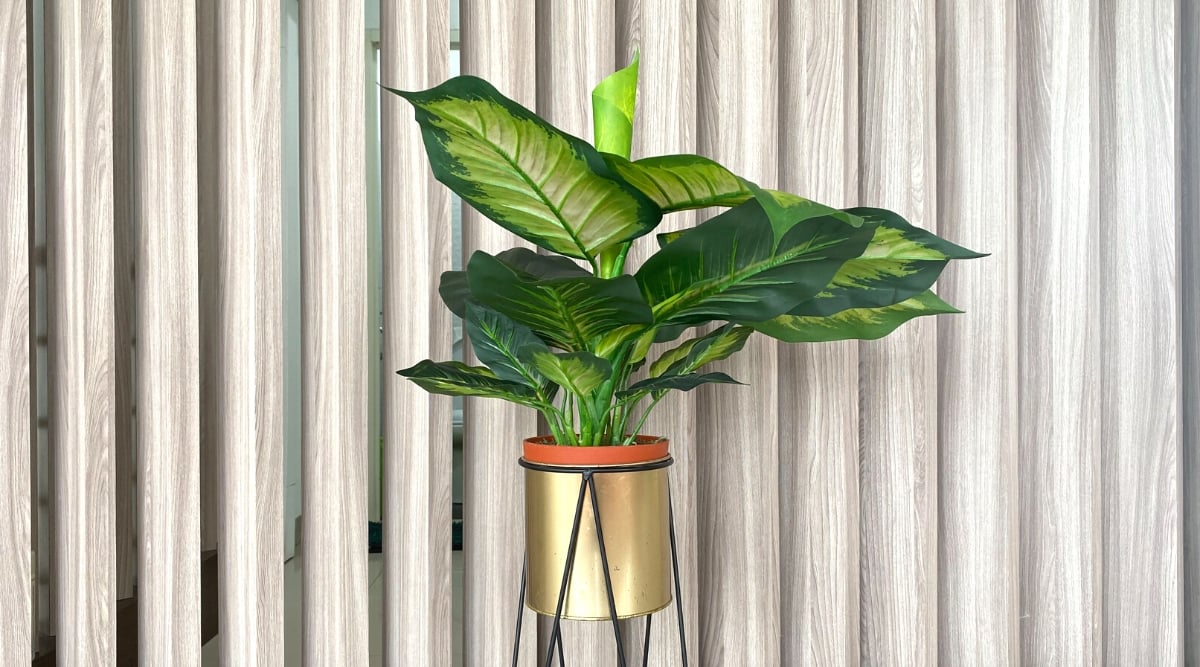
Dieffenbachia is another tropical beauty ideal for beginner gardeners. They are named dumb canes after the symptoms of ingestion of the toxic sap, so this is not one to keep around pets or curious children. But if you have a safe space out of harm’s way, this plant is a must-have in a neon plant collection.
Bright and warm colors can be hard to fit into certain interior design aesthetics, particularly anything modern and minimalist. That’s where Dieffenbachia comes in. Unlike some of the previous entries, the neon color in many varieties is mostly lime or almost white, blending well with other houseplants while retaining eye-catching color.
Dumb canes don’t respond well to overwatering, wilting quickly, and developing mushy stems. Water regularly but never allow the soil to become waterlogged. Also, check the soil with your finger to ensure the top layer is completely dry before watering again.
Pothos
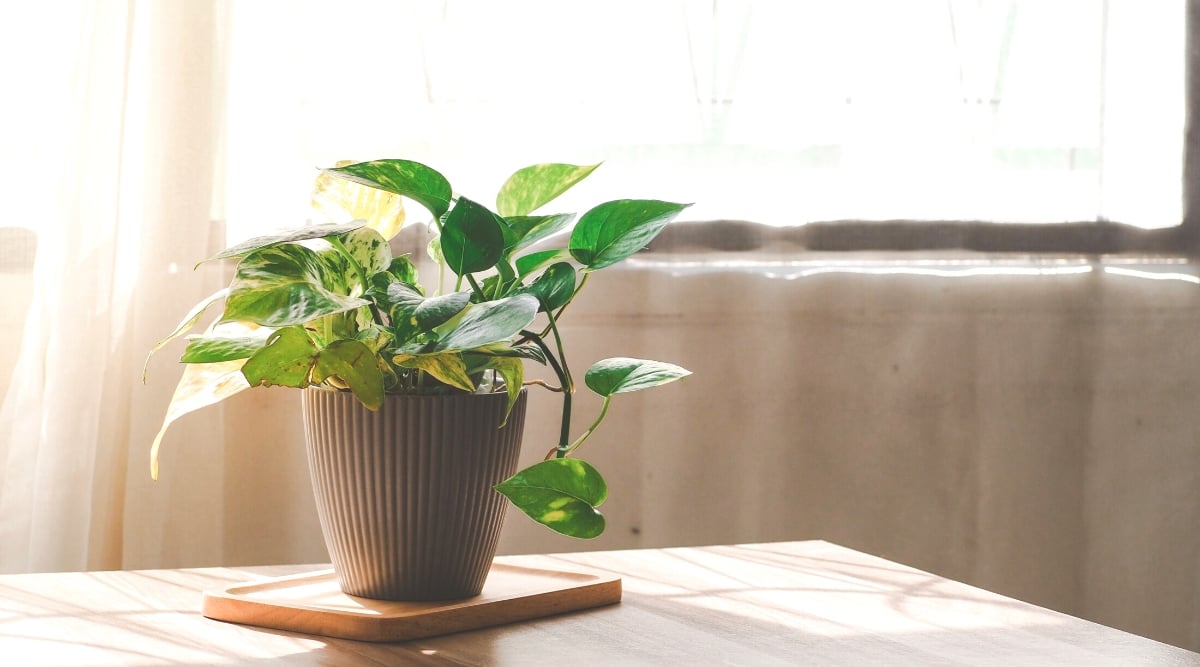
The humble pothos may not be as famous as it was a few years ago, but it still holds a special place in many houseplant collector’s hearts. These plants are remarkably tough – some say almost impossible to kill – and don’t trouble beginners or experienced gardeners.
A few pothos cultivars have been introduced to the market in recent years, known for their unique variegation. You may recognize favorites like ‘Marble Queen’ and ‘Pearls and Jade’, but for neon color, the aptly named ‘Neon’ cultivar is the one to look out for.
This pothos has solid lime green leaves that fit the Cyber Lime trend perfectly. The lack of large patches of variegation also means they will be happier in lower-light areas of your home without a dramatic change in color or pattern like other cultivars.
Heartleaf Philodendron
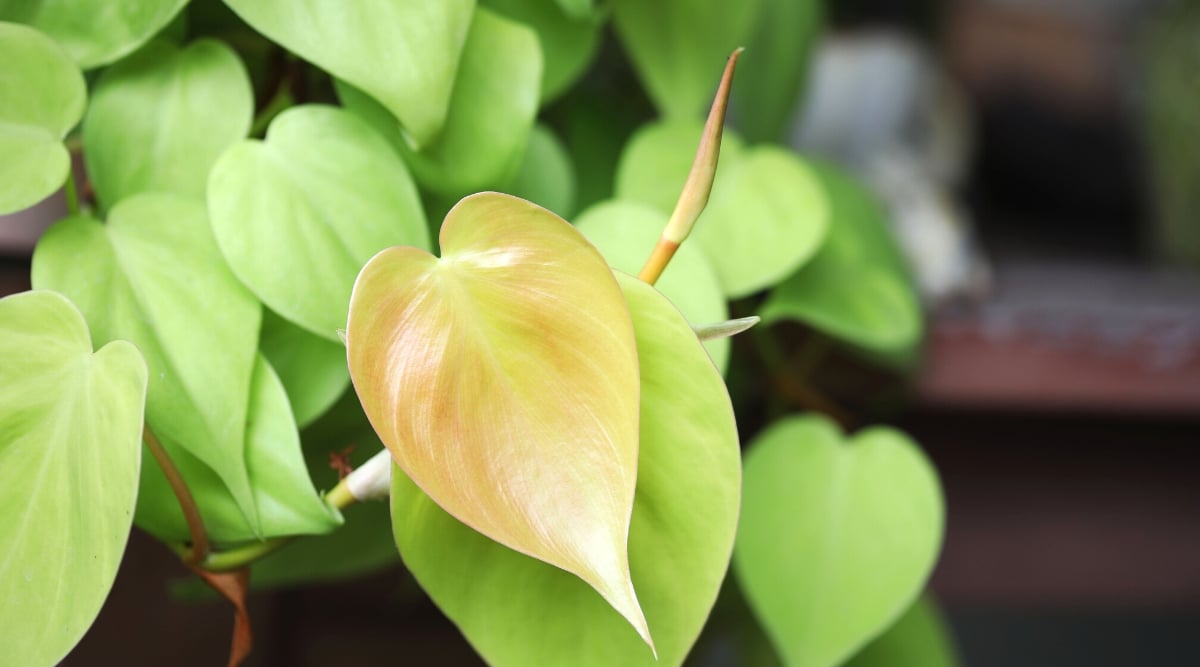
Similar in look to the pothos, Philodendron hederaceum is one of the most popular Philodendron species to grow indoors. It looks great in hanging baskets or left to trail along shelves and is happy to grow in lower light with a missed watering or two.
There is a heartleaf philodendron variety commonly known as neon – the ‘Lemon Lime’ cultivar. The leaves are yellowish green with a bright glow to them, almost like the neon of a yellow or green highlighter. Quick growth and ease of care mean you’ll see plenty of these vibrant leaves brightening your indoor garden throughout the year.
To emphasize the bright color of this variety, I would place it amongst other houseplants with deep green leaves to make the yellow really stand out. Alternatively, you can go all out with neon color and keep several ‘Lemon Lime’s together, dotting them along a shelf or hanging them in a row.
Philodendron Golden Violin
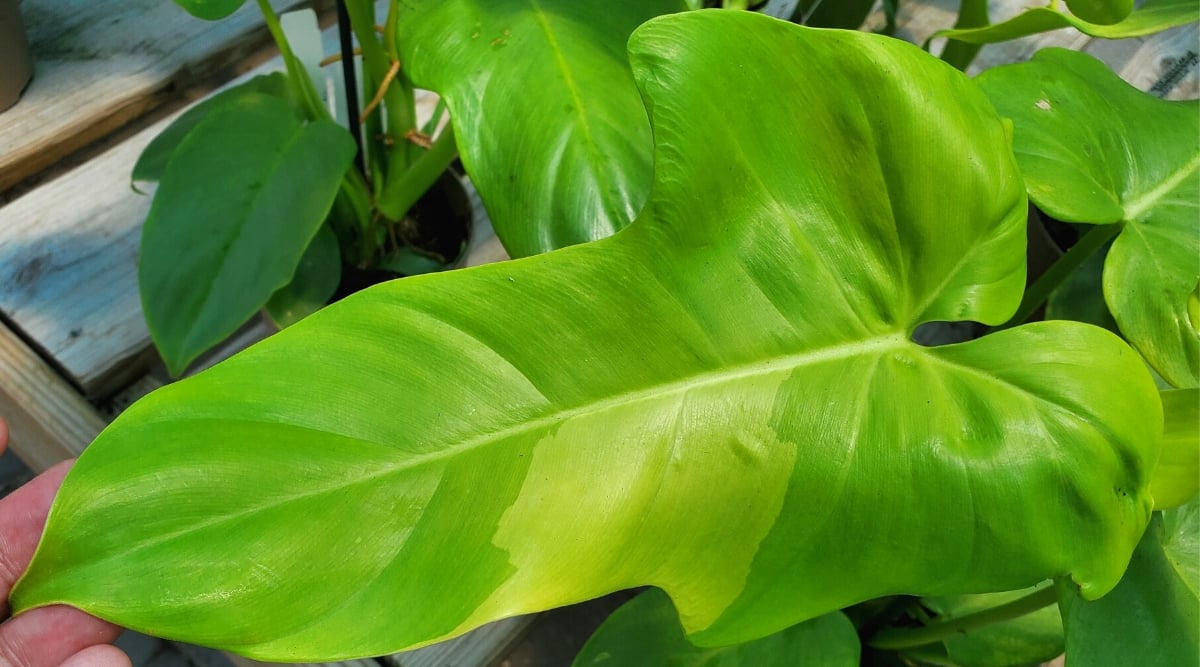
There are several other philodendrons that fit the neon description, but my favorite has to be Philodendron bipennifolium Aurea. Known as the golden violin, this species is in the spotlight at the moment and deserves all the love it’s getting.
Golden violin leaves start out a neon golden yellow, slowly fading to lime green as the leaf ages. This creates continuous contrast between the leaves, especially in spring when masses of new leaves emerge. The interesting shape of the leaves also adds to their uniqueness.
This philodendron can be a little harder to find than the more common species, and their widespread popularity certainly isn’t helping supply. You’ll need to keep an eye out and snatch one up as soon as it becomes available if you want to add a golden violin to your collection.
Coleus
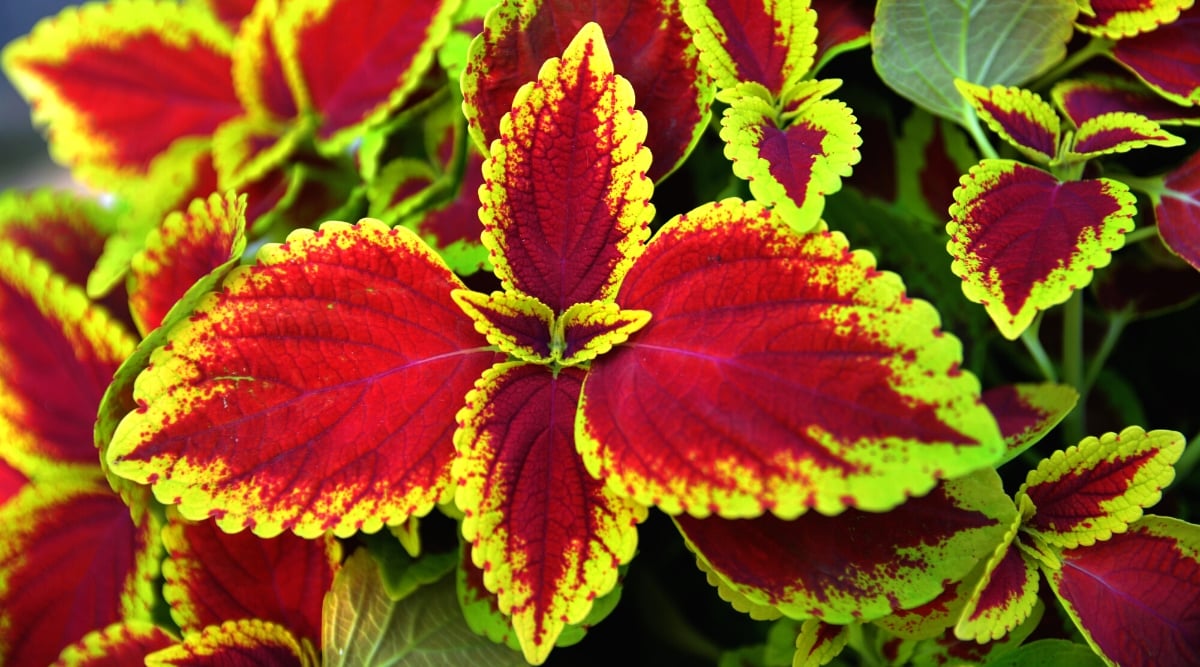
Coleus are usually grown outdoors as foliage plants to add a pop of color to shady areas. But since they don’t require full sun and are happy to grow in containers, it’s also possible to keep them as houseplants. They may not grow as large as they would outdoors, but that’s usually better for indoor spaces anyway.
Coleus and neon colors go hand in hand, with a long list of cultivars sporting glowing hues. The lime green varieties are a personal favorite, but you can find combinations of neon pink, purple, red, and orange. Some have solid colors, but many varieties blend multiple in bright patterns to give you the best of both worlds.
I think the best way to shop for coleus plants is in person, where you can see the vivid colors for yourself and pick your favorites.
Rex Begonia
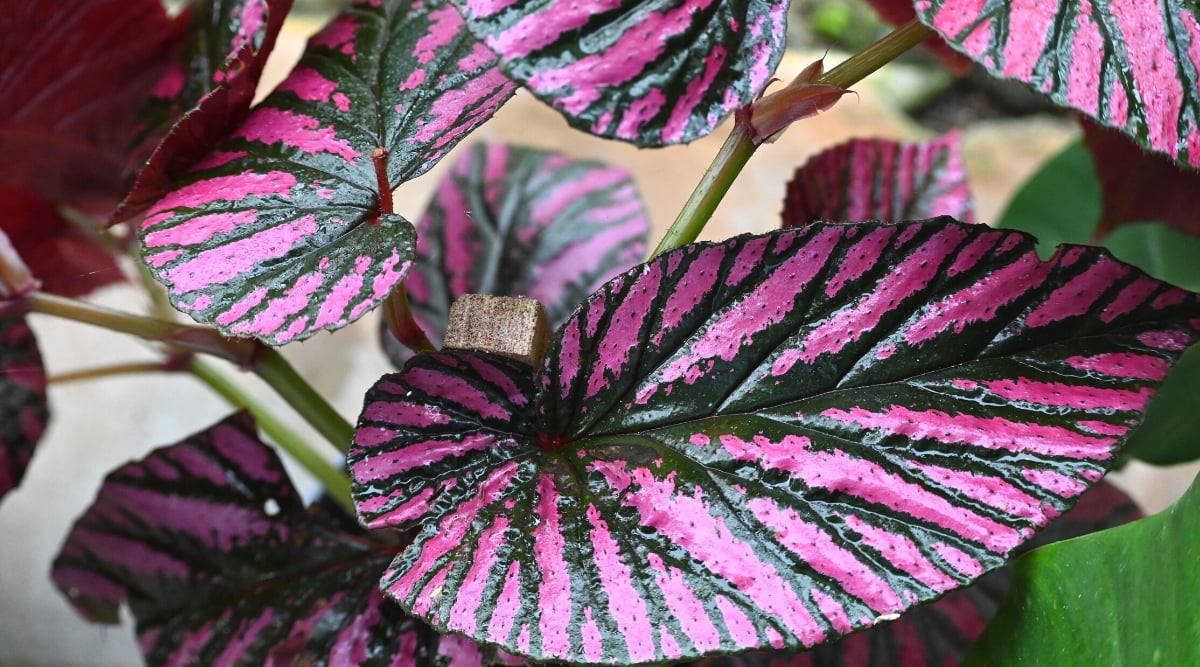
The impressive Begonia genus is packed with variety – just one of the reasons why they are so popular for growing indoors and out. But when it comes to color, no type tops Begonia rex.
You’ll find cultivars of this species in pink, purple, red, and a silvery white that glistens in the sunlight. They may not be as bright as some of the other neon plants on this list, but they make up for it with intricate patterns and unique textures.
To ensure they look their best year-round, keep your rex begonias in a warm area with humidity above 50%. Regular watering helps the leaves keep their structure. Plant in well-draining houseplant soil mix to prevent any waterlogging that may lead to rot.
Arrowhead Vine
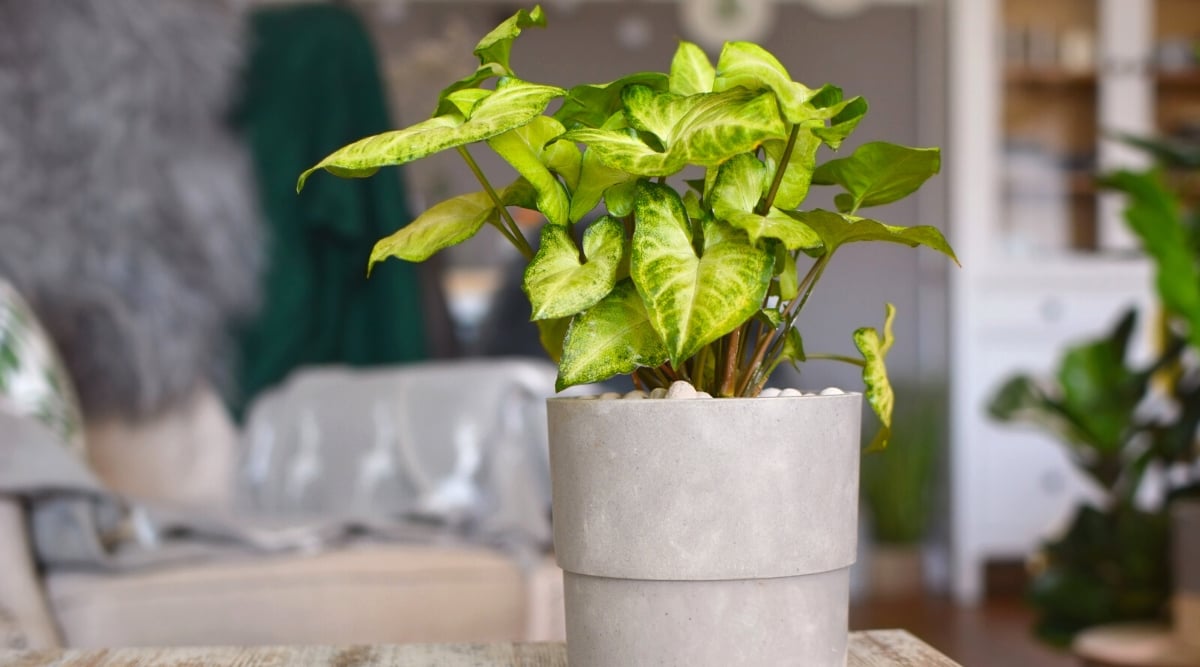
Syngonium hasn’t always made the top of houseplant favorite lists, but it has grown massively in popularity in the last few years. This is partly thanks to the new and interesting cultivars on the market, transforming a classic green vine into a colorful marvel.
One of the most famous is Syngonium ‘Neon,’ a variety with stunning pink leaves that fit the Barbiecore aesthetic perfectly. It’s on this list for the neon in the name, although the pink is not as vivid as other pink houseplants you may find. It’s more subtle but no less beautiful.
Arrowhead vines are tough plants that are wonderfully easy to care for. This variety may need a little more light to maintain the pink color, but green ones will happily grow in low-light areas of your home.
Calla Lily
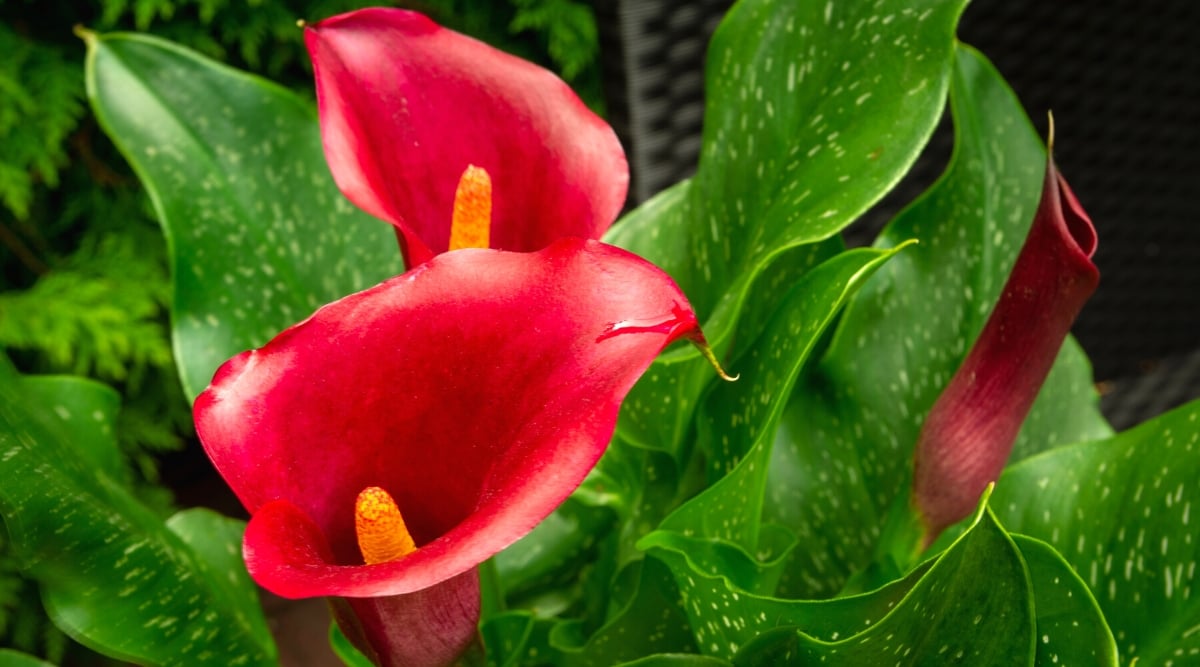
Calla lilies are largely grown for their colorful flowers. As they love warmth and plenty of moisture, they make great candidates for growing indoors, where flowers are often scarce. Blooming from winter into spring, these plants are ideal for uplifting gloomy interiors with neon hues.
You can find calla lilies in almost any color, from a dark, almost-black purple, to sunny yellow. For neon color, I would opt for one of the pink, purple, or orange varieties, or bi-colored varieties with combinations of many. As there are so many to choose from, you’ll probably find yourself walking out of the nursery with more than one.
One important characteristic of Zantedeschia care is watering. These plants naturally grow near water sources in consistently moist soil. If you tend to overwater your houseplants, this is the species for you.
Guzmania
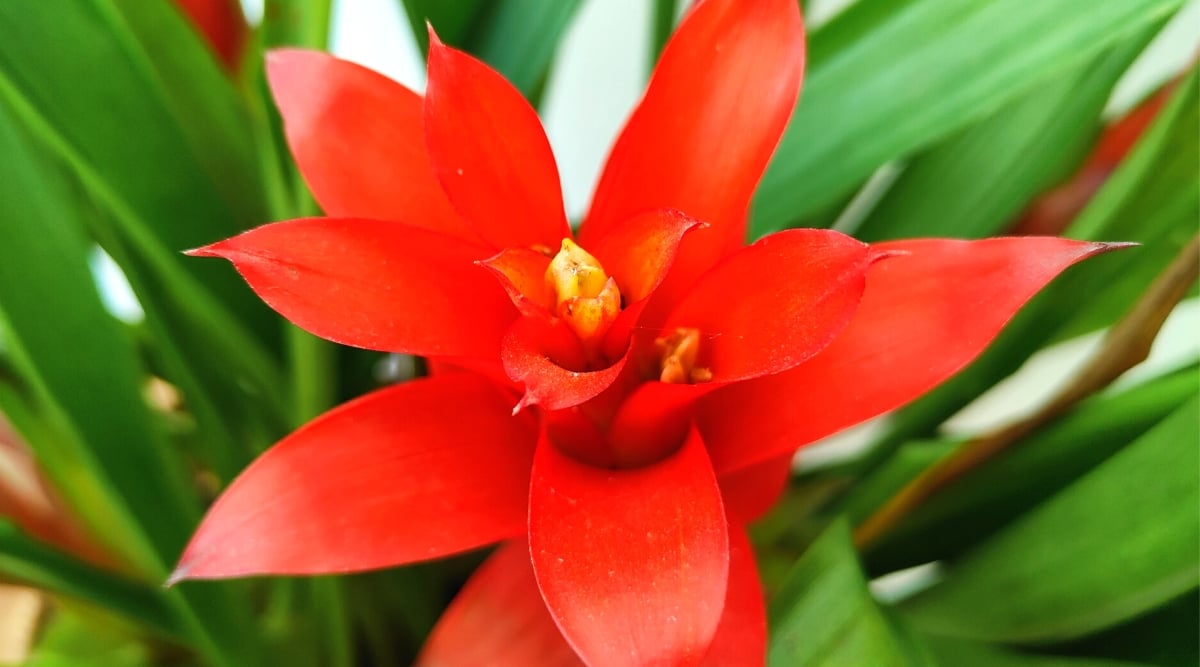
Part of the unique Bromeliaceae (Bromeliad) family, Guzmania is beloved for its bright, star-shaped flowers emerging from the center of the plant. These long-lasting flowers appear in summer and have a unique spiked look that’s hard to miss, especially with their neon colors.
Look at any image of guzmanias online, and you’ll see a mass of neon colors. The warm tones of red, orange, and yellow stand out, but you can also choose pinkish or purple options if they fit better with your other indoor plants.
As epiphytes, these plants don’t like to be overwatered and require a well-draining, airy potting mix. They grow best in bright indirect light but can also handle moderate light, unlike some other bromeliad species.
Cyclamen
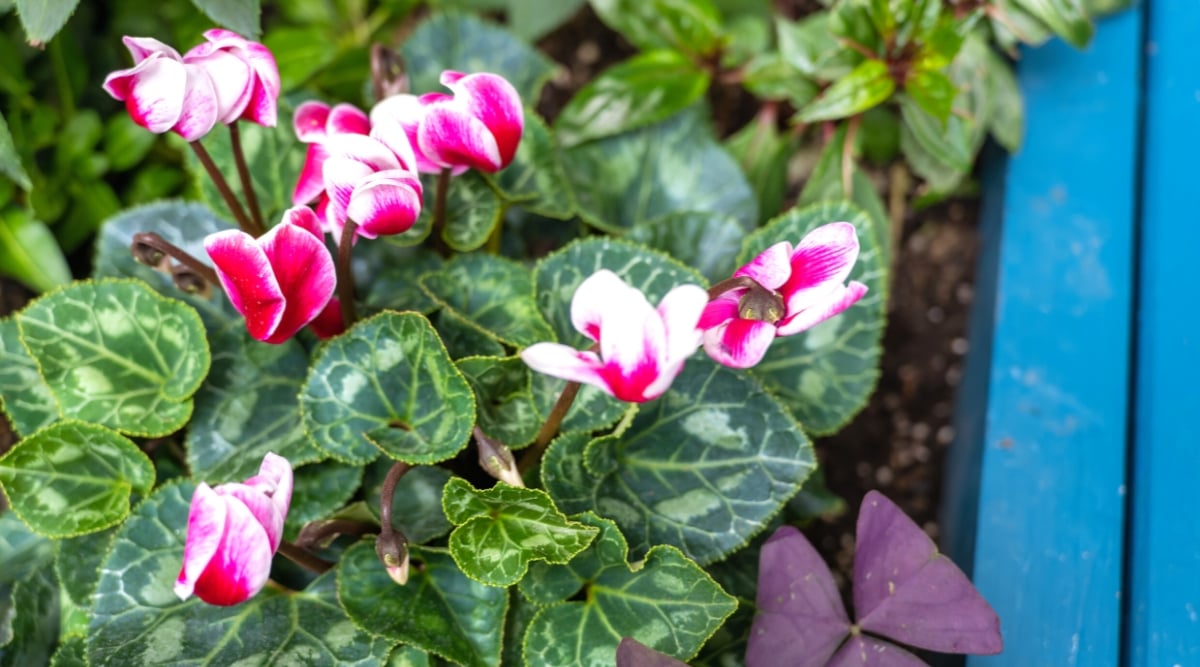
Cyclamens are the darlings of the winter garden. Dormant in summer, the plants emerge every year in fall to bring some excitement to winter and early spring gardens. There are many species to choose from, but Cyclamen persicum, or Persian cyclamen, is the one most often grown as a houseplant.
The flowers are where you’ll find all the neon colors you’re after, including pink, red, and purple. Although these only pop up for a few weeks of the year, the foliage provides plenty of ornamental interest throughout fall.
As these plants prefer cooler weather, keep them away from direct sun and any heat sources in your home. Too much light or high temperatures will impact blooming time.
Poinsettia
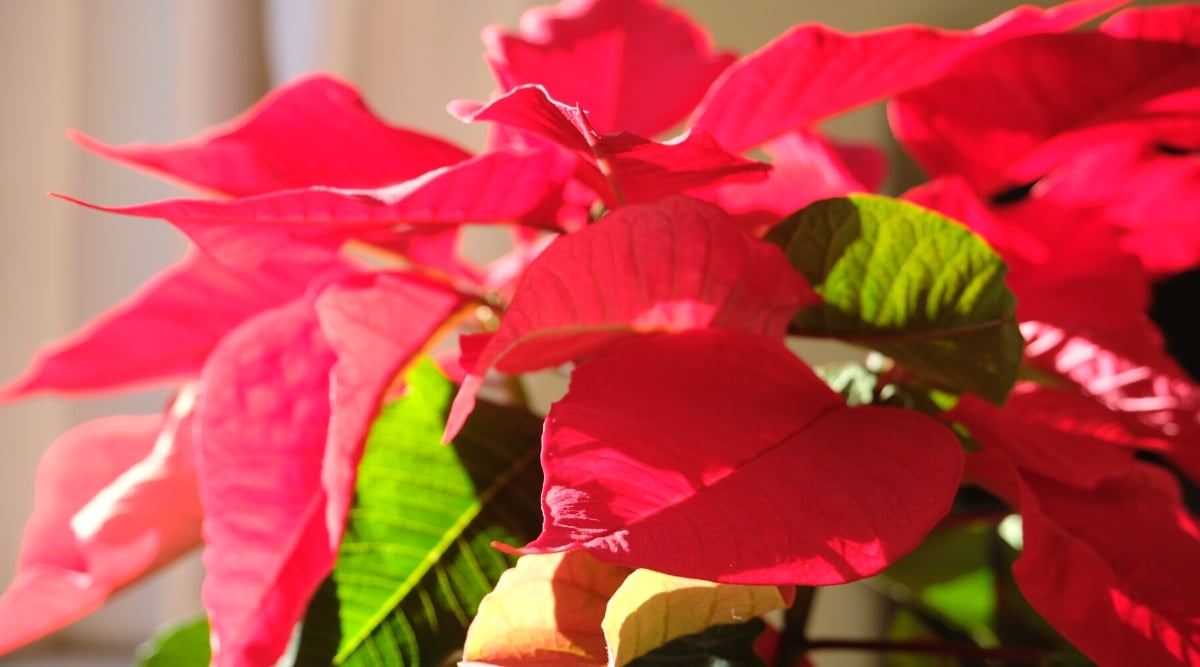
A staple around the holiday season, poinsettia is not usually kept as a houseplant long term. After January, when the colorful bracts fade, people often get rid of the plant and simply purchase a new one the following season. But it is possible to keep them throughout the year and encourage them to flower again at the perfect time.
Bright traditional red is the most popular color, but you can find poinsettias with bracts of various neon hues if you keep looking. They may be hard to find out of season, so do your shopping around the holidays (or toward the end of the holidays when the prices will hopefully be reduced).
Since the color comes from the bracts, it’s important to know how to encourage your plants to flower again. Around September, start keeping them in complete darkness (no artificial light) for about 14 hours every night. This signals the change in seasons that encourages them to start blooming.
Bird of Paradise
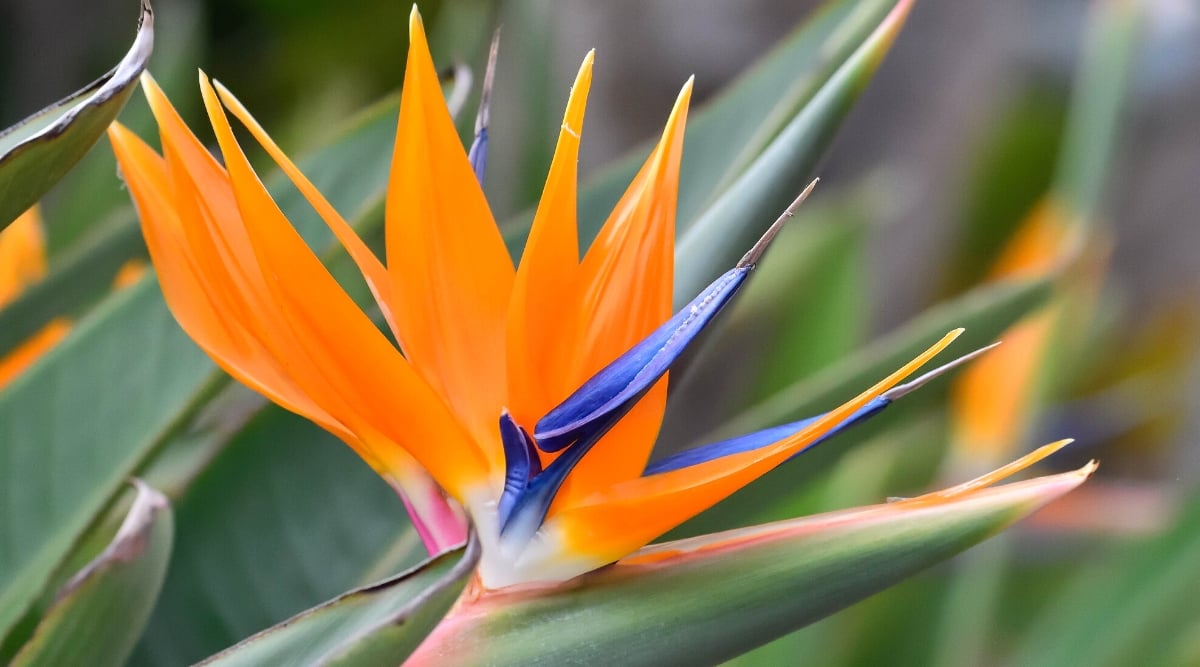
Strelitzias are typically grown indoors for their foliage. The large, paddle-shaped leaves fill empty corners with ease and add a tropical feel to any space. But in the right conditions, they also produce neon orange and blue flowers that look unlike anything else you’ll find indoors.
Unfortunately, these plants need plenty of direct sun to produce these flowers. They need to be placed in front of a sunny window with several hours of direct light – not easy to find indoors. But if you do have the ideal spot, bird of paradise ticks all the boxes for neon color.
Dragon Tree
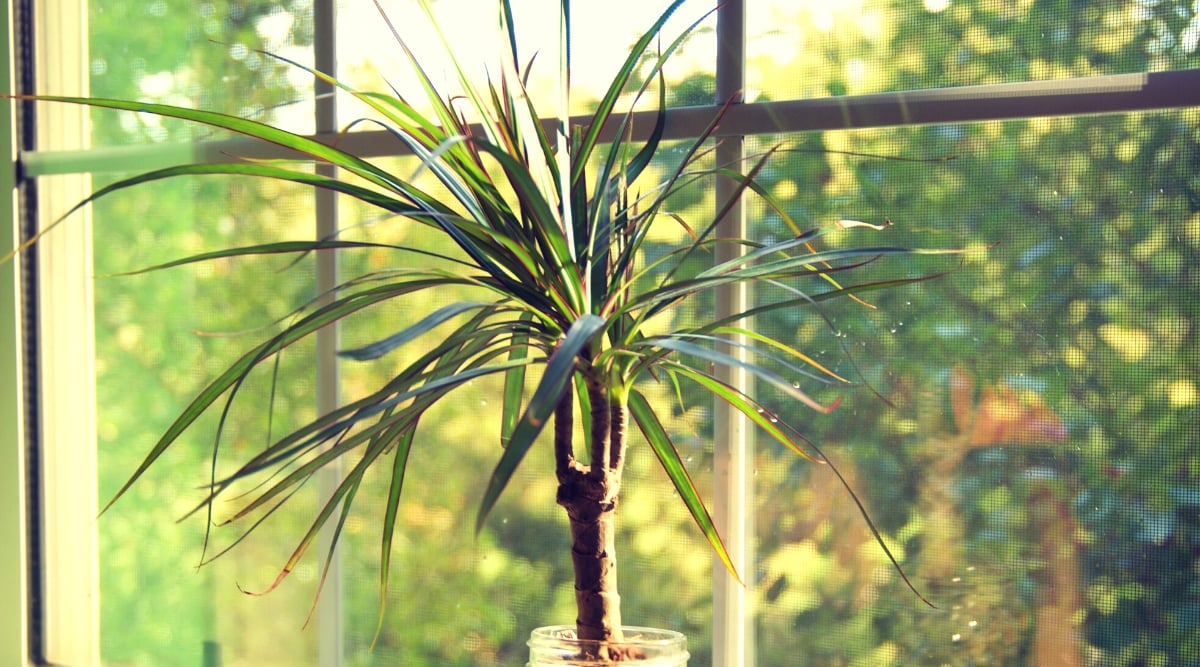
Dracaena marginata is a spiked and structural houseplant ideal for beginner gardeners. I’ve had mine for years, over which time it has endured plenty of neglect and still looks just as good as the day I bought it.
The standard green varieties are stunning alone. But if you want neon color, any of the pink cultivars work well. The leaves are not completely pink but have a pink edging or striped pattern that emphasizes their narrow shape.
Dragon trees grow incredibly slowly, so it’s best to purchase the size you’re happy with rather than wait years for them to fill out. These plants handle lack of moisture well and don’t appreciate being overwatered.
Ti Plant
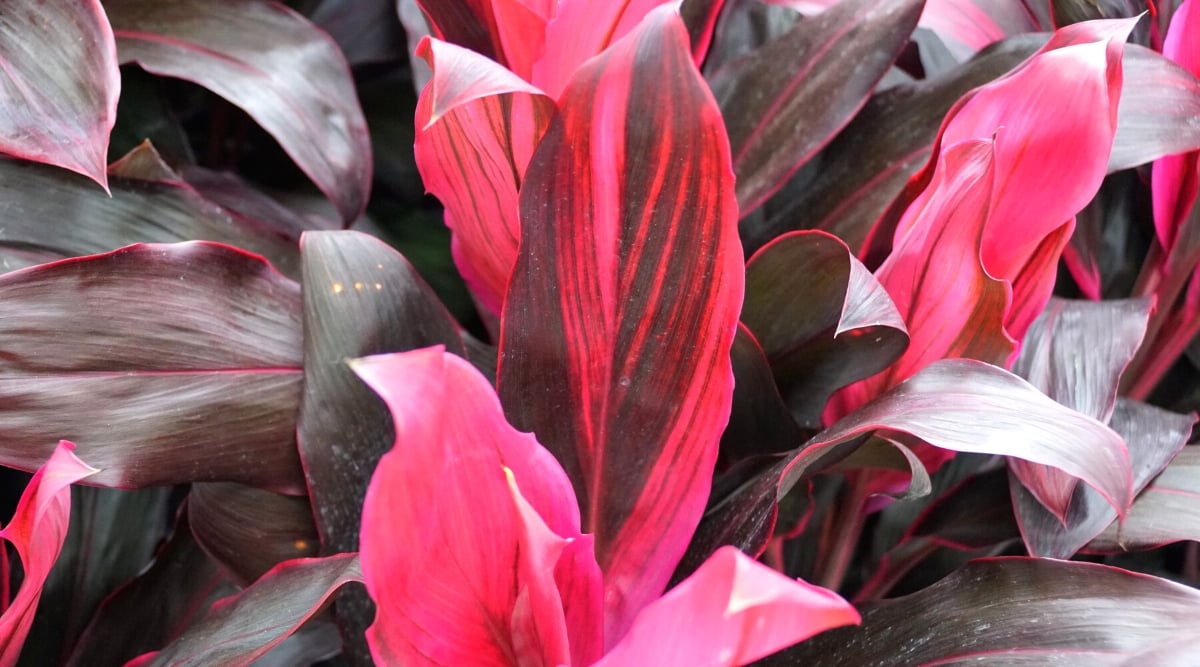
The final entry is the ti plant, scientifically known as Cordyline fruticosa. Their tropical native environment and colorful leaves have made them ideal indoor plants, especially if you’re looking to fill empty spaces in your home.
These plants are available in a range of hues, including neon pink and purple. There are also lime green options or bi-colored cultivars with a combination of colors in loose streaked patterns.
To maintain this color, keep your ti plant in front of a bright window with a few hours of direct gentle sun. This plant prefers filtered water due to fluoride sensitivities. High humidity will also keep the leaves looking their best.
Final Thoughts
Whether you’re jumping in on the trend or simply want to brighten your home with colorful houseplants, these neon indoor plants are the way to do it.

